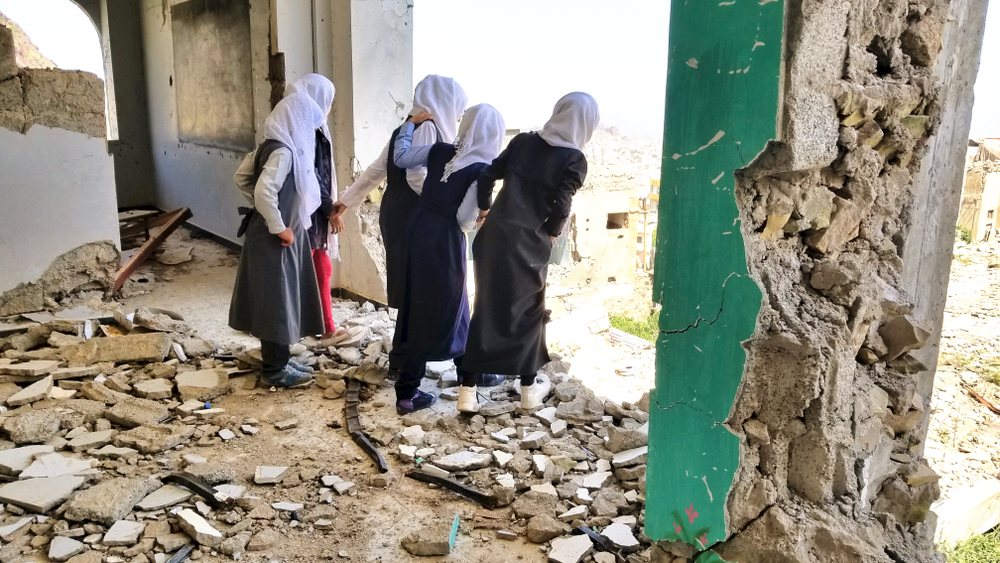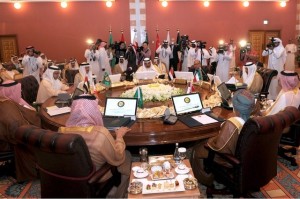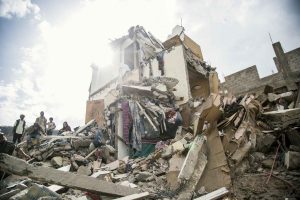by Theodore Karasik and Emily Torjusen
The Yemen peace talks held in Rimbo, Sweden in December 2018 were the start of what has proven to be a long and difficult process of attempting to find a compromise between the dominant Houthi militia and the internationally recognized Yemeni government. Initially, the announcement of the Stockholm peace talks, first publicly discussed on November 8 in an interview on Al Hurra TV, was met with trepidation because of a concern that all parties involved were not given a voice at the talks. This is a particular issue in the region because the failure of the national dialogue held in 2014 initiated the Houthis’ rise to power. Some groups have pushed for more involvement from Yemeni women and their humanitarian efforts since studies have shown that the involvement of women in the peace process usually has longer lasting effect with more fruitful results. Bringing in more Yemeni voices to the dialogue can also help build a more unified national identity during this difficult period of time.
Martin Griffiths, the former UN special envoy, faced these concerns as he worked to bring the parties to the table. Previously the Houthis had withdrawn from peace talks in September 2018 over flight safety concerns because the coalition controls Yemeni air space. To help broker negotiations, Griffiths previously arranged for 50 Houthi fighters to fly to Oman for medical services on December 3. Griffiths also stressed that, despite criticism over the talks’ two-sided approach, the southern secessionists would be included in future talks after the initial groundwork of the Stockholm meeting.
The first round of talks intended to build faith and confidence. A major focus was on the port of Hodeidah, where most humanitarian relief arrives. Located in Hodeidah are the Red Sea Mills, which houses thousands of tons of wheat as part of the World Food Program. The port is also a significant source of revenue for the country, and the revenue generated from the reopening of ports, according to one proposal coming out of negotiations, could go towards the salaries of civil servants who had remained unpaid throughout the fighting. Yet, the Riyadh-led coalition accuses Iran of smuggling weapons to the Houthis through the port. As a preventative measure, the UN and Saudi forces inspect shipments into the port. Combined with the taxes Houthi authorities impose on the goods, these inspections drive up costs while delaying the delivery of essential supplies to Yemeni civilians.
The week of talks ended with UN Attorney General Antonio Guterres flying in to help close the final agreements. The results of the process proved promising as the two parties agreed to a prisoner exchange, a plan to de-escalate tensions in Taiz, and an essential agreement for a ceasefire and redeployment from Hodeidah.
Addressing Hodeidah
The Hodeidah agreement made provisions for the UN to play a supervisory role in the city while the joint Redeployment Coordination Committee (RCC) organizes the departure of both parties’ militaries. The agreement also included a system of paying civil servants through port revenues distributed through the Central Bank of Yemen. Additionally, an immediate ceasefire, which went into effect on December 18, applied to the ports of Hodeidah, Salif, and Ras Issa, as well as the governorate.
Although these agreements signified substantial progress, they also heightened the risk. Some analysts, humanitarian workers, and consultants involved in previous negotiations initially were apprehensive about the Stockholm talks, pointing to the possibility that the agreements could unravel because of the precarious nature of the stakeholders and their relationships with other interested parties or extra-regional powers. In addition, the Houthis themselves needed to behave in a manner conducive to further talks. Houthi violations of the Sweden Accord number in the hundreds, which is testing the patience of those trying to bypass Houthi intransigence to deliver food aid.
To ensure successful follow-through, retired Major General Patrick Cammaert arrived on December 22 to lead the UN monitoring mission. The number of observers in Hodeidah are currently around 20, which Griffiths intends to increase to 75. Cammaert would oversee these observers as well as chair the RCC committee process.
Although the ceasefire is officially in effect, there have still been outbreaks of violence on both sides, and tensions have increased in Hodeidah. After holding two meetings on Houthi-controlled territory, the RCC has not met for three weeks, and the situation seems to be hitting a critical point.
The prisoner-exchange agreement, covering the release of almost 15,000 people, has stalled. Both sides have been frustrated by unknowns, such as whether some of those named in the exchange were lost in the fighting, fake, or are being denied by the other party. The International Committee of the Red Cross (ICRC) is overseeing the negotiations, but the Yemeni government has maintained an all-or-nothing approach. The Houthis may have important officials in their custody, so the coalition is even more determined to ensure the complete return of prisoners. As the Yemeni government sees it, either all the names submitted for release are freed or the agreement fails.
The Stockholm agreement has other problematic ambiguities. The Hodeidah agreement specifies that “local security forces” will maintain order in Hodeidah after both parties redeploy. However, because the identity of these security forces remains unknown, the Houthis are questioning the prudence of giving up the port city. Additionally, port revenue had been intended for the Yemen Central Bank to pay civil servants. But debate over which central bank controlled by which party has complicated the matter.
Drone Attack
On January 10, a Houthi drone killed six soldiers on Al Anad Air Base during a military parade. The strike, which the Yemeni government has called a “terrorist attack,” targeted high-level officials—injuring the army’s deputy chief of staff, the head of the intelligence unit, the commander of the military police, and the army commander of the fourth region—and successfully decapitated Yemen military leadership. This incident marks a major violation of the peace talks.
Efforts to salvage the situation followed with prisoner-exchange talks held in Jordan on January 16 and 17. Griffiths, meanwhile, returned to Yemen for the second time that month to work on the Hodeidah agreement. Still, the coalition responded to the drone attack with a series of airstrikes on January 19, and mortar shelling from the Houthis damaged two essential grain silos, destroying tons of wheat. The coalition has used these incidents to call on the UN and international powers to pressure the Houthis to abide by the Stockholm agreement.
Though the prisoner exchange negotiations continue, the first actual exchange occurred on January 29 with the help of the ICRC, which orchestrated the release of one Saudi national from Sana‘a in exchange for seven sick Yemeni nationals from Riyadh. The success of these exchanges is key to implementing the rest of the Stockholm agreement, which had fallen behind schedule.
Originally the redeployment from Hodeidah was supposed to take place for two weeks after December 18 when the ceasefire took effect. to continue leading the UN monitoring mission after Cammaert’s return.
Reportedly, a compromise may soon be reached on this redeployment. The RCC met under Michael Anker Lollesgaard, who now leads the UN monitoring mission and who made a proposal “that proved acceptable, in principle,” according to UN spokesman Stephane Dujarric. If both parties agree to the compromise, there will be further talks under the RCC’s auspices. On the other hand, the prisoner exchange in Jordan ended without finalizing the names for release. Despite this setback, the Sub-Committee on Dead Bodies and Human Remains, an affiliate of the prisoner exchange committee, reached a joint agreement to exchange a thousand bodies on each side. The agreement followed the Committee’s release of information about individuals named in the prisoner lists. As long as both sides distrust each other, they will attempt to keep the detainees as a security measure.
Anti-Houthi forces finally achieved their strategic goal of capturing the Red Sea Mills at the end of February 2019 but only after a fire destroyed two silos at the facility. The Houthis, meanwhile, continue to interfere in necessary humanitarian aid. Now there are increasing signs that the Houthis will not give up Hodeidah, which will likely lead to a new spasm of violence. Houthi media is again threatening Riyadh and Abu Dhabi will ballistic missile strikes. Moreover, the Southern Secessionist Movement is seeing a greater opportunity to advance their agenda of breaking away from Yemen proper with the help of Moscow. Given the sheer number of battle fronts in the war in Yemen, as well as the involvement of al-Qaeda on the Arabian Peninsula and the Islamic State, peace seems ever more elusive in the country, which is bad news for all those in Yemen’s starving and disease-ridden interior who desperately await the delivery of humanitarian aid.
Theodore Karasik (@Tkarasik) is the senior advisor at Gulf State Analytics (@GulfStateAnalyt), a Washington, DC-based geopolitical risk consultancy. Emily Torjusen is an intern at Gulf State Analytics.






It would be nice if commentary on Yemen was provided by Yemeni’s.
Asif, I don’t know what you are complaining about. We have many well funded Think Tanks in Washington capable of running the entire world. I was rather impressed with the summary of Houthi terroist attacks, cease fire violations, and overall lack of dental hygiene.
The forces of light and goodness are on whomever Washington considers worthy at the moment.
What a fairness! What a journalism! What a ‘Washington based’ institution! And what a think firing Tank!
Just for instance consider the first issue of drone attack which happened far out of cease fire area as expressed in guardian “outside the UN-administered ceasefire zone in Lahj province in the south of the country..” so clearly nothing is to do with the peace agreement.
Can we think that the author is this much unaware of the fact? Or apparently the Saudi money weight more?
Unfortunately this war in Yemen will go on unless and until the Maloon-Bin-Saud (MbS) is arrested and brought to justice in ICI! Viva Yemen and Yemenis!